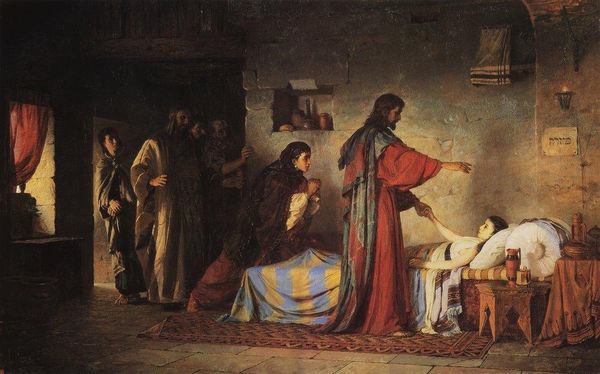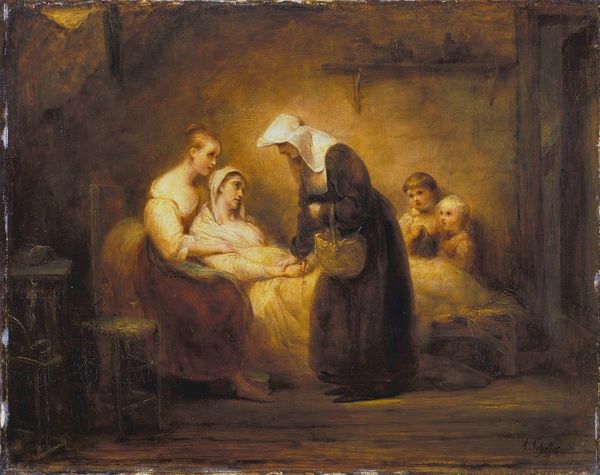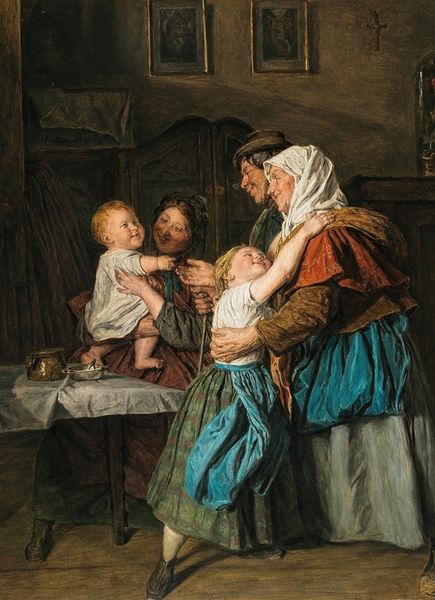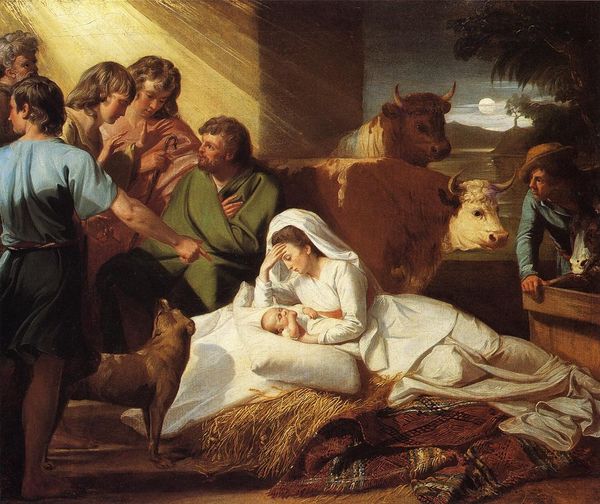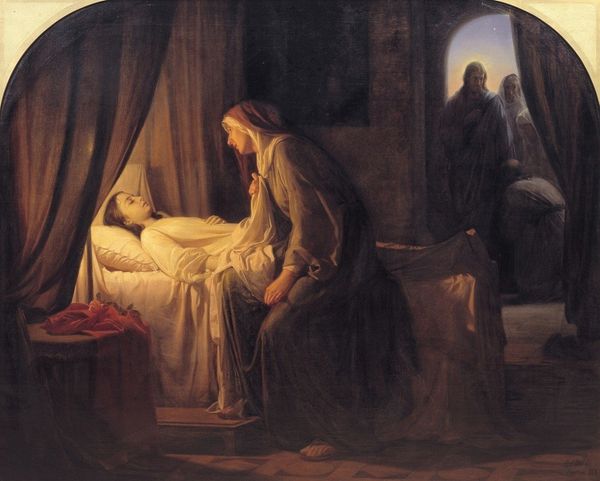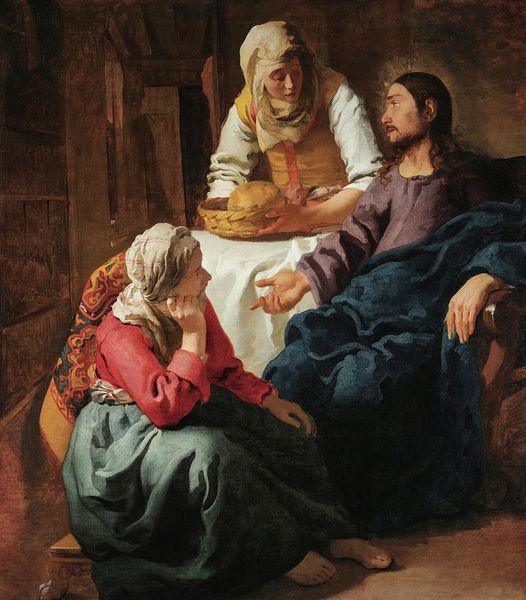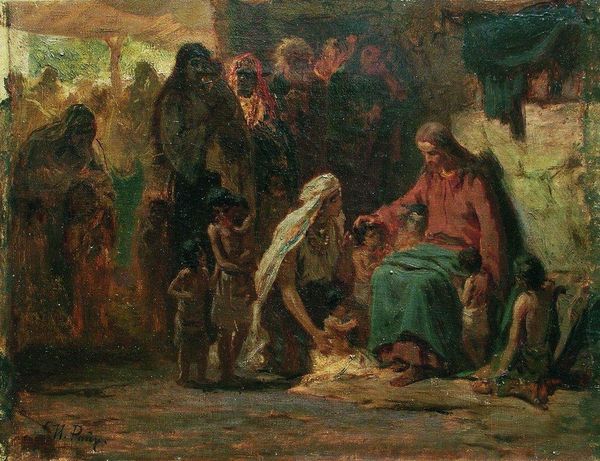
painting, oil-paint
#
portrait
#
painting
#
oil-paint
#
oil painting
#
genre-painting
#
history-painting
#
academic-art
#
realism
Copyright: Public domain
Curator: What strikes you first about this oil painting? To me, Ilya Repin's "Nativity", painted in 1890, seems enshrouded in symbolism. Editor: I'm immediately drawn to the way light functions here—or perhaps, the near absence of it. Everything exists within this heavy darkness. The colors feel very subdued and muted too. Curator: Yes, it’s a muted palette that really pulls at our memory of other Nativities and forces one to question what Repin is attempting to say. Light often symbolizes divine presence in depictions of the Nativity. Here, its near absence or struggling presence could signify struggle, doubt, a very human experience. Note the presence of everyday objects too, disrupting the sacred mood. Editor: The use of light and shadow also influences the central theme here. How interesting it is to explore a religious subject during this time in history. Repin was known for his realist works showing the plight of common people, exploring the weight and grimness of peasant life under Tsarist Russia. Perhaps he's mirroring or paralleling something else? The birth of hope or newness is happening against a backdrop of heavy history, of political darkness? Curator: Exactly! We cannot extract this "Nativity" from its place within a greater artistic and cultural climate. It can reflect both Repin’s academic leaning and realist interests to create an art of ideas, communicating not just biblical narrative but current social narrative. The symbols he uses aren’t just traditional Christian emblems, they’re a window into late 19th-century Russia. What emotions does that elicit? Editor: It pulls at this idea that hope exists in unexpected places, regardless of external gloominess. This interpretation adds another dimension when we consider the socio-political tensions that existed during the late 19th-century under Tsar Alexander III's regime. Curator: This pushes us to consider what other layers Repin has injected. Thank you, that provides more insight on the relationship between the public role of this artwork, its symbols, and the artist himself. Editor: Likewise! This really illuminates not only what we are seeing, but how social contexts shape our understanding of art.
Comments
No comments
Be the first to comment and join the conversation on the ultimate creative platform.

